The importance of the American Rescue Plan for U.S. workers and families on the law’s second anniversary, in 8 charts

Tomorrow marks 2 years since the American Rescue Plan Act was signed into law. One year after the COVID-19 pandemic that began in early 2020 triggered enormous employment losses and the worst economic contraction since the mid-1940s, the 2021 law allocated $1.9 trillion in relief and critical public investments. Among its key provisions were:
- Enhanced Unemployment Insurance for workers who had lost their jobs through no fault of their own
- Increased and expanded Child Tax Credit to help workers and their families manage the cost of raising children
- Emergency rental assistance to households
- Grants to states, localities, and businesses struggling to navigate shortfalls in revenue and other pandemic-related disruptions
The COVID-19 shock sparked an unprecedented public health crisis, widened longstanding racial, ethnic, and gender socioeconomic disparities, and highlighted important cracks in the country’s social infrastructure. Many parts of the U.S. economy have not yet fully recovered, and legislators have failed to maintain successful pandemic-era policies.
Yet swift government action through legislation such as the American Rescue Plan Act of 2021 and the Coronavirus Aid, Relief, and Economic Security, or CARES, Act of 2020 were essential in mitigating the economic pain brought on by the pandemic. The result of these policies, shown below, demonstrate how public investment is critical for robust and broad-based economic growth, especially for groups already facing socioeconomic hardship. Here is a snapshot of the U.S. economy on the second anniversary of the American Rescue Plan Act of 2020, in 8 charts.
The impact of the American Rescue Plan in 8 charts
Between February 2020 and April 2020, U.S. employment shrank by almost 15 percent. While job losses dwarfed those of previous downturns, the U.S. labor market has fully bounced back in the 2 years since the onset of the COVID-19 recession. (See Figure 1.)
Figure 1
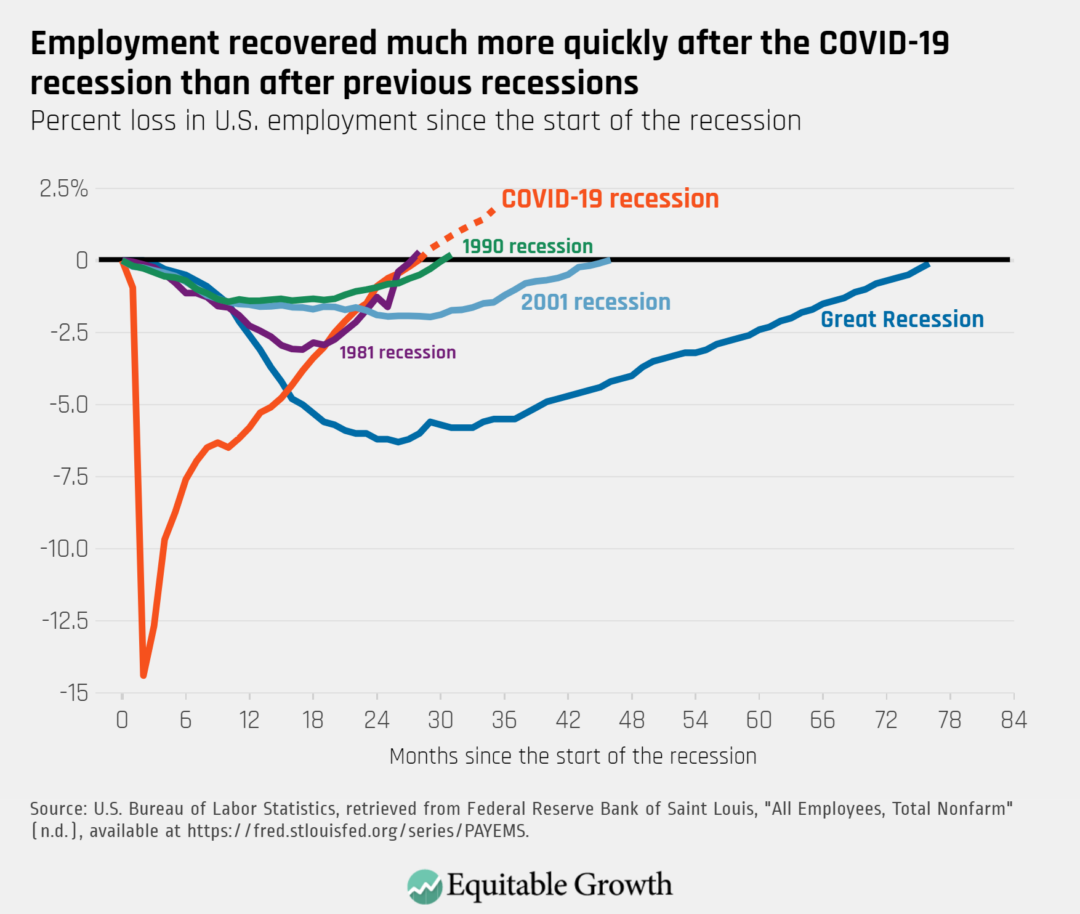
The overall U.S. economic recovery in employment, then, has been exceptionally strong, and industries such as transportation and warehousing have grown substantially since early 2020. Yet some parts of the U.S. economy, such as leisure and hospitality and the public sector, are not yet back to their pre-pandemic job levels. (See Figure 2.)
Figure 2
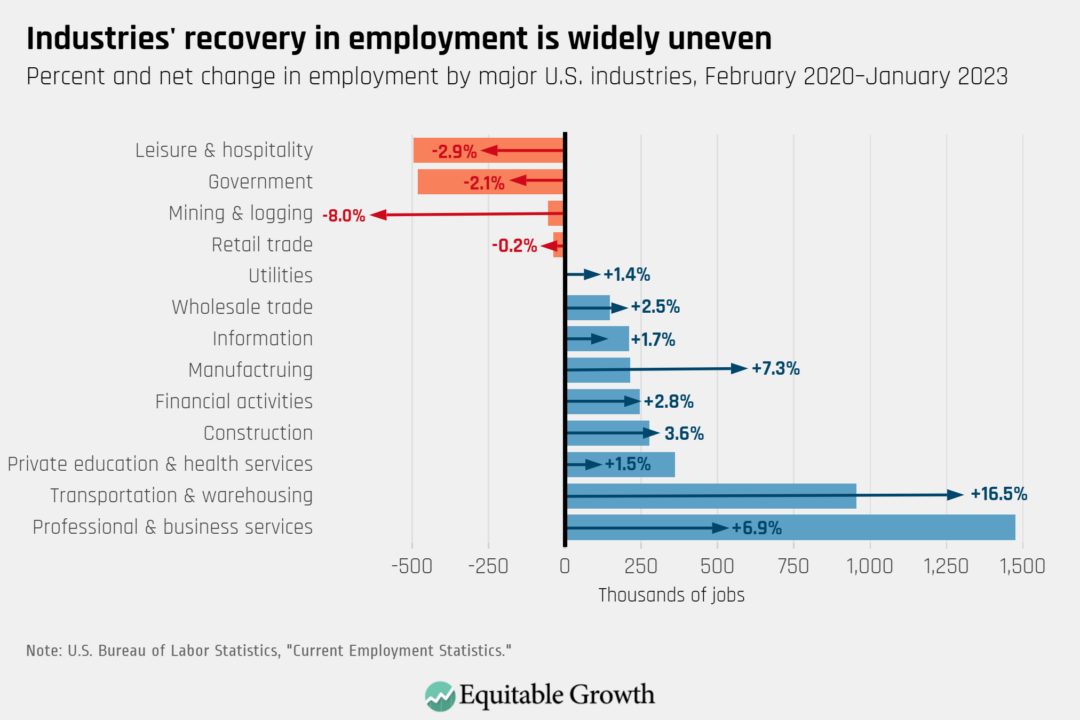
The same is true within sectors of the U.S. economy. For instance, employment in the essential child day care services industry dropped by a massive 35 percent at the height of the COVID-19 recession. This sector is still experiencing a notable shortfall in employment. (See Figure 3.)
Figure 3
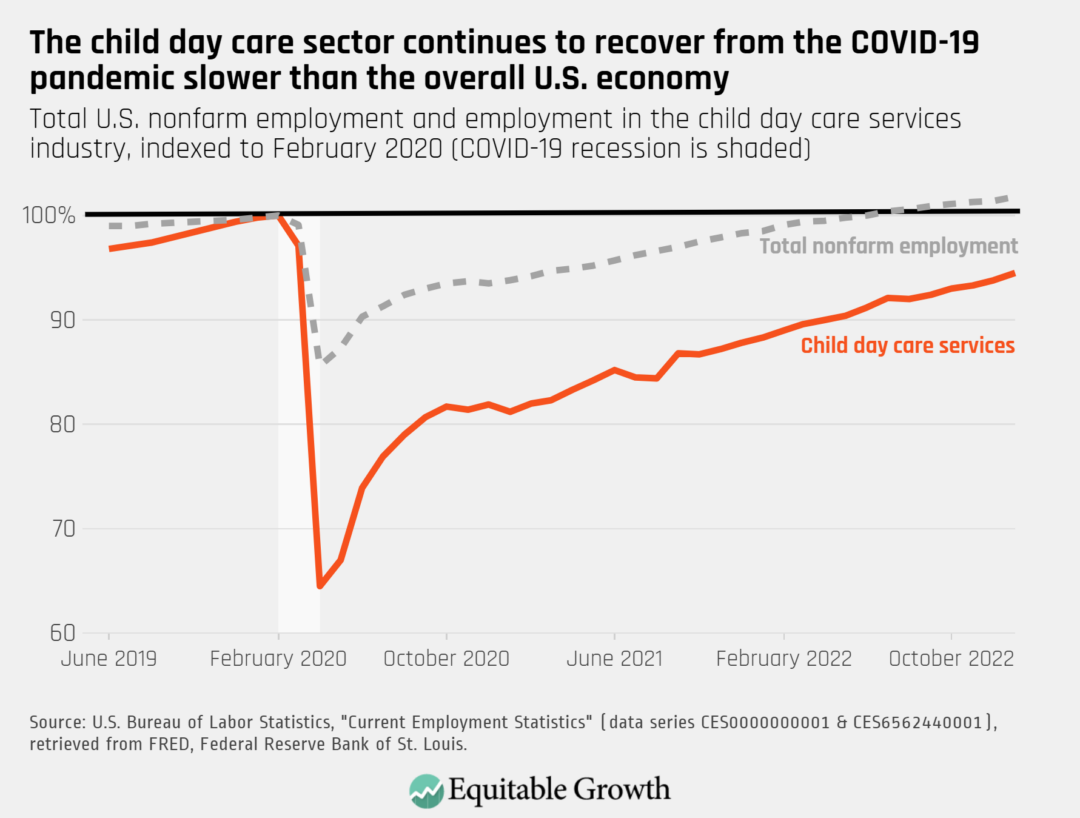
The decline in U.S. employment was also especially severe for women workers and workers of color. Latinas experienced the deepest decline—a drop in employment of almost 20 percent. As of January 2023, however, Black male workers and Latino and Latina workers have surpassed their pre-pandemic employment levels. (See Figure 4.)
Figure 4
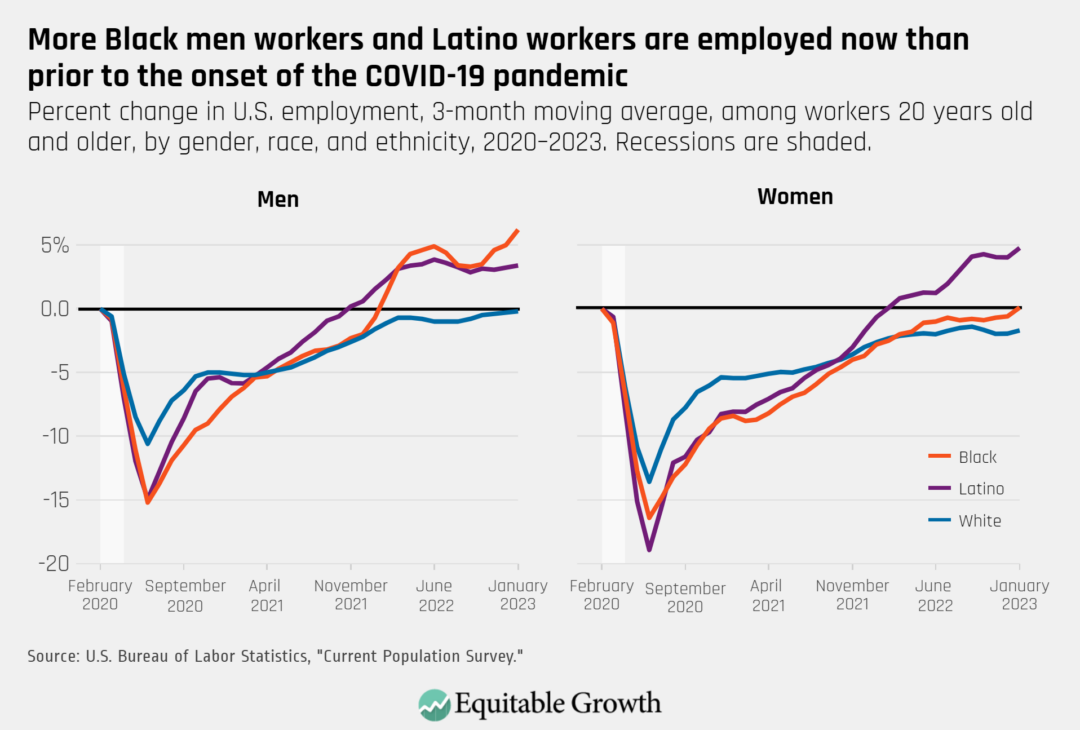
As such, workers of color, low-income workers, and workers with lower levels of formal education were much more likely to report having lost employment income in the first year of the pandemic in the United States. A much smaller share of workers is still reporting lost income, but important disparities remain. (See Figure 5.)
Figure 5
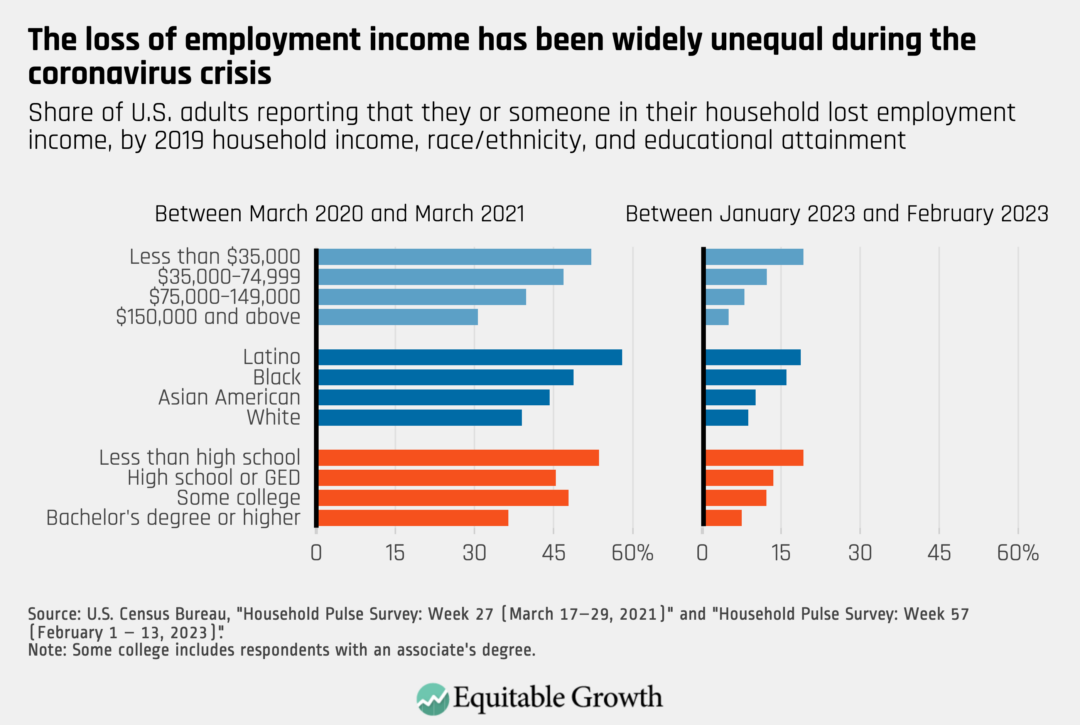
These disparities are also reflected in U.S. households’ abilities to pay for basic expenses. According to data by the U.S. Census Household Pulse Survey, Black and Latino households are much more likely to find it very difficult to pay regular expenses than their White and Asian American counterparts. (See Figure 6.)
Figure 6

And when important pandemic-era policies expired at a time of rising inflation, more and more U.S. households turned to credit cards, loans, and savings to meet their spending needs. (See Figure 7.)
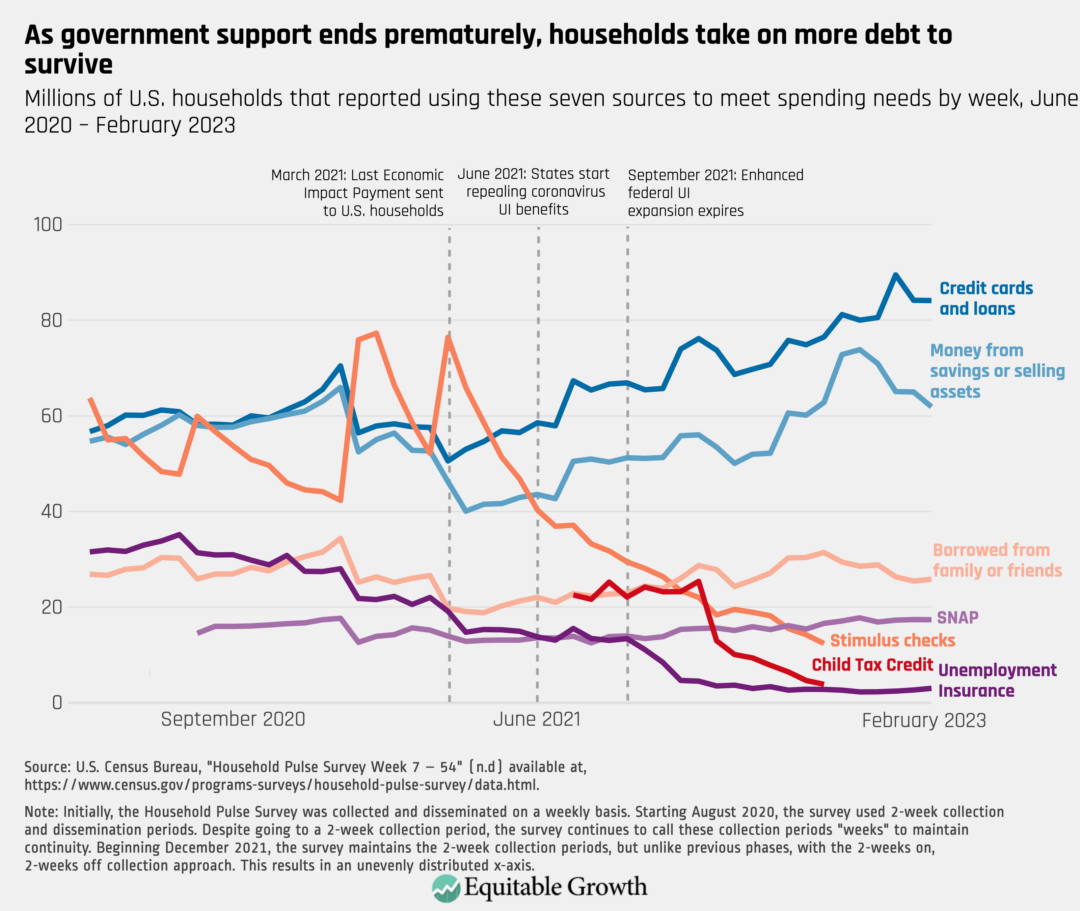
Indeed, perhaps one of the greatest missed opportunities of the past few years was failing to permanently strengthen the country’s income supports that were boosted through the CARES Act of 2020 and the American Rescue Plan Act, such as continuing the enhanced Child Tax Credit—a policy that reduced child poverty in the United States by 40 percent and mitigated economic hardship among low-income households. (See Figure 8.)
Figure 8
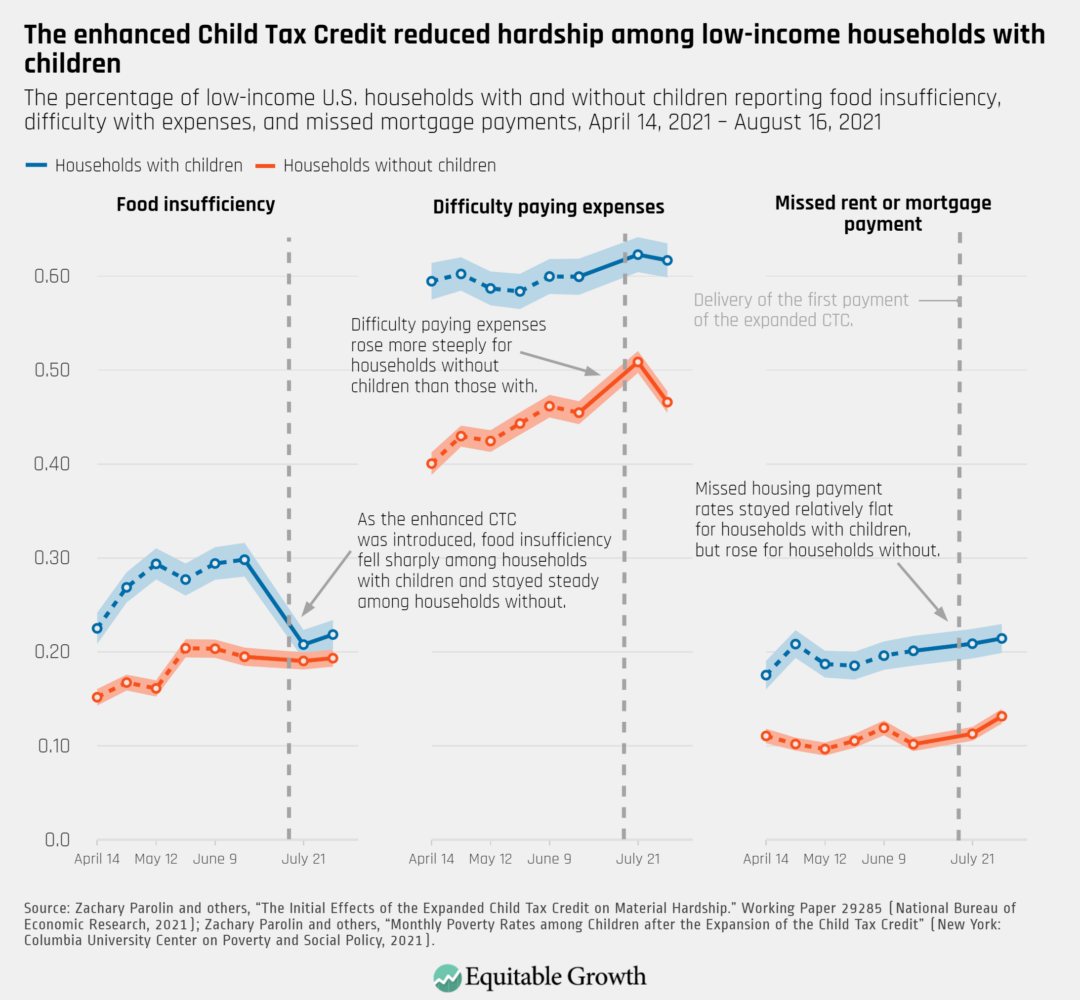
Conclusion
Three years after the onset of the COVID-19 pandemic and the resulting inflation crisis, and 2 years after the passage of the American Rescue Plan Act, many economic indicators show that the recovery from the 2020 recession has been exceptionally strong. That the deepest recession in recent U.S. history was also the shortest is, in large part, the result of a robust public policy response to an unprecedented crisis. These investments in the U.S. economy point to the importance of government support to achieve full and equitable recoveries.
At the same time, neither the CARES Act nor the American Rescue Plan Act thoroughly addressed the structural challenges in the U.S. income supports system, nor did they establish greater institutional support for worker power, which is critical to reversing longstanding disparities. And more recent pieces of legislation, such as the historic Inflation Reduction Act of 2021, did not prioritize investments in the country’s social infrastructure—key for broad-based and sustainable economic growth. The current U.S. economic recovery rests on the positive outcomes that stem from robust public investments in U.S. workers, families, and communities, a lesson that continues to be important for policymakers to understand going forward.






